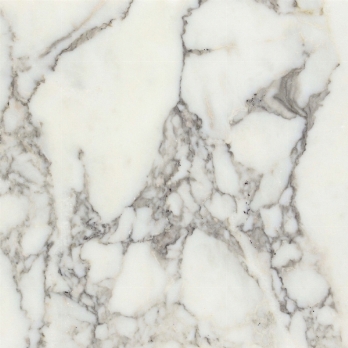Arabescato Vagli
marble
Petrografic name (according EN 12407): Marble
Category: arabescato
colour: white
Macroscopic description: A monogenic marble breccia with clasts varying from centimetric to decimetric and up to metric in size that are close to one another and immersed in a dark grey and ivory brown or greenish-coloured groundmass. the clasts are white in colour and have slender ivory or grey veins in places as well as light grey patches up to centimetric in size due to the variation in grain size of the elements. inside these patches surface pores can sometimes be observed. the edges of the clasts are irregular and indistinct in places.
Technical data provides a frame of reference only. As stone is a product of nature, up to date testing to determine specific physical qualities should be repeated for each major project. We decline any responsability for the mis-use of this data, since said data is sourced from the quarry.
Physical mechanical characteristics
| STANDARD | U.M. | MEAN VALUE | ST. DEV. | |
 EN 13755-08 EN 13755-08 |
Water absorption at atmospheric pressure | % | 1,6 | 0,01 |
 EN 1936-07 EN 1936-07 |
Apparent Density | KG/m3 | 2720 | 5,2 |
 EN 1936-07 EN 1936-07 |
Open porosity | % | 0,5 | 0,01 |
 EN 12372-07 EN 12372-07 |
Flexural strength | |||
| (in natural conditions) | MPa | 16,5 | 2,6 | |
| (EN 12371-03 exposed to 48 frost cycles | MPa | 13,4 | 6,5 | |
 EN 1926-07 EN 1926-07 |
Uniaxial compressive strength | MPa | 108,4 | 32 |
 EN 14231-04 EN 14231-04 |
Slip resistance (honed finishing) | |||
| (dry) | USRV | 68 | 2,8 | |
| (wet) | USRV | 26 | 1,8 | |
Block and slab characteristics
Average size of blocks: 2,80 x 1,50 x 1,50m.
slabs are preferably cut against the grain or perpendicular to the grain, i.e. the hard way or the easy way, so as to obtain a more even and scarcely oriented pattern.
 Cutting of blocks
Cutting of blocks  Surface lavoration
Surface lavoration
 Cutting of blocks
Cutting of blocks  Surface lavoration
Surface lavoration
Microscopic description according to EN 12407 e EN 12460
| A crystalloblastic metamorphic lithotype composed of anisotropic calcite. two different patterns can be observed. the first is anisotropic, composed of calcite blasts that are subeuhedral with straight, rounded/sutured grain boundaries. the mosaic structure is seriate in size between 50 and 250 um. there are trace amounts of quartz crystals and in places plurimetric-sized nodules of a relict appearance made up interlobed, deformed calcite that is clouded by opaque material. veins occur with a sub-parallel orientation composed of calcite blasts and microblasts that are clouded to some extent. these form a second pattern composed of a mosaic of calcite blasts of a maximum size of 500 um with interlobed, de-formed boundaries clouded by opaque minerals that alternate with micrometric blasts (30 um), abundant quartz and trace amounts of feldspar. |




